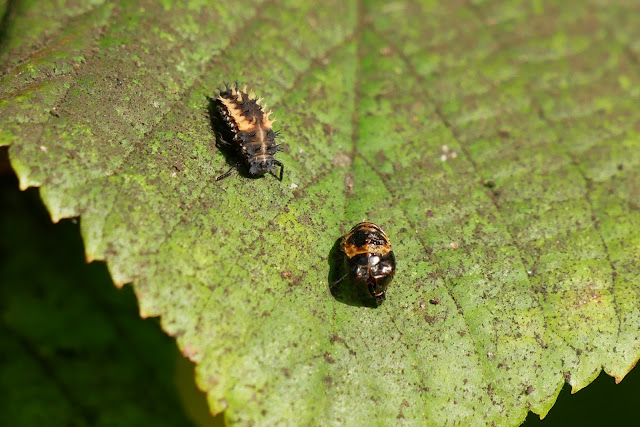Following my chance encounter with Harlequin Ladybirds hatching, the subject of my last post, I have quickly found a new tunnel of learning to run down. I returned to the Lime tree where I had previously discovered both adult Ladybirds and pupae, determined to expand my survey. This time I found that every single one of the Lime trees on Tyntesfield's lower drive was hosting many hundreds, probably thousands of Ladybirds. With a minimal amount of extra scrutiny I was able to find not only adults and pupae, but also lots of larvae still active.
As I was taking pictures of a larva on a leaf I became aware of a host of smaller residents - lots of fast moving tiny termite like creatures. These I now know to be Barkflies, a relatively recent (2003) renaming from Barklice in an attempt to improve their image. It certainly worked for me, I found watching them compelling as they whizzed around and interacted with one another in their micro-colony. They are the outdoor version of Booklice, not regarded as pests and, I assume, a tasty snack for a voracious Ladybird larva.
On today's gloriously sunny morning I went out to photograph the scenery, but found myself drawn back to the Ladybird Limes. The last couple of pictures show several stages of the transition from larva to adult. Next for me is to find out how long the process takes. I bought a leafed twig home with me several days ago with a couple of larvae on, but they have yet to start the transition. Camera shy perhaps.
Part of the joy of writing this blog is researching the things I observe and the glorious fact every creature has a fanbase. Here is a link for the Biological Records Centre: Barkfly subsection. It is a fine, fine thing and I give my respect and gratitude.
https://www.brc.ac.uk/schemes/barkfly/introduction.htm
 | 











No comments:
Post a Comment